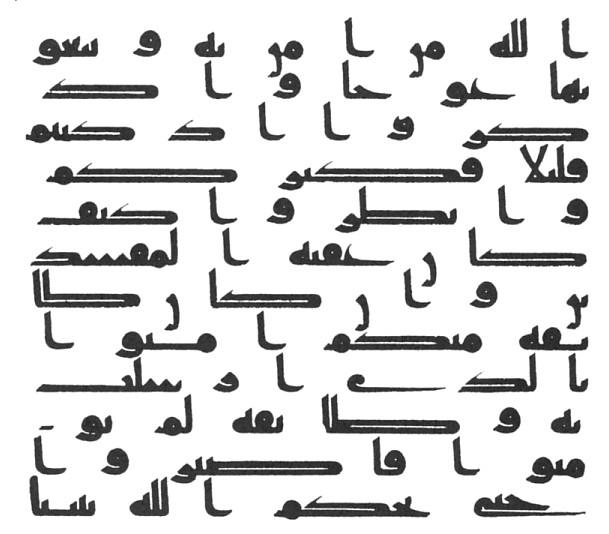|
Shadda
Shaddah ( ar, شَدّة ' , "[sign of] emphasis", also called by the verbal noun from the same root, tashdid ' "emphasis") is one of the Arabic diacritics, diacritics used with the Arabic alphabet, indicating a gemination, geminated consonant. It is functionally equivalent to writing a consonant twice in the orthographies of languages like Latin, Italian language, Italian, Swedish language, Swedish, and Ancient Greek, and is thus rendered in Latin script in most schemes of Arabic transliteration, e.g. = ' 'pomegranates'. Form In shape, it is a small letter ''shin (letter)#Arabic šīn/sīn, s(h)in'', standing for ''shaddah''. It was devised for poetry by al-Khalil ibn Ahmad in the eighth century, replacing an earlier dot.Versteegh, 1997. ''The Arabic language''. p 56. Combination with other diacritics When a is used on a consonant which also takes a Arabic diacritics#Fatḥah, , the is written above the . If the consonant takes a Arabic diacritics#Kasrah, , it is wr ... [...More Info...] [...Related Items...] OR: [Wikipedia] [Google] [Baidu] |
Shin (letter)
Shin (also spelled Šin (') or Sheen) is the twenty-first letter of the Semitic abjads, including Phoenician Shin , Hebrew Shin , Aramaic Shin , Syriac Shin ܫ, and Arabic Shin (in abjadi order, 13th in modern order). Its sound value is a voiceless sibilant, or . The Phoenician letter gave rise to the Greek Sigma () (which in turn gave Latin and Cyrillic С), and the letter '' Sha'' in the Glagolitic and Cyrillic scripts (, ). The South Arabian and Ethiopian letter ''Śawt'' is also cognate. Origins The Proto-Sinaitic glyph, according to William Albright, was based on a "tooth" and with the phonemic value š "corresponds etymologically (in part, at least) to original Semitic ''ṯ'' (th), which was pronounced ''s'' in South Canaanite". The Phoenician letter expressed the continuants of two Proto-Semitic phonemes, and may have been based on a pictogram of a tooth (in modern Hebrew ''shen''). The Encyclopaedia Judaica, 1972, records that it originally represented a ... [...More Info...] [...Related Items...] OR: [Wikipedia] [Google] [Baidu] |
Arabic Diacritics
The Arabic script has numerous diacritics, which include: consonant pointing known as (), and supplementary diacritics known as (). The latter include the vowel marks termed (; singular: , '). The Arabic script is a modified abjad, where short consonants and long vowels are represented by letters but short vowels and consonant length are not generally indicated in writing. ' is optional to represent missing vowels and consonant length. Modern Arabic is always written with the ''i‘jām''—consonant pointing, but only religious texts, children's books and works for learners are written with the full ''tashkīl''—vowel guides and consonant length. It is however not uncommon for authors to add diacritics to a word or letter when the grammatical case or the meaning is deemed otherwise ambiguous. In addition, classical works and historic documents rendered to the general public are often rendered with the full ''tashkīl'', to compensate for the gap in understanding resulting ... [...More Info...] [...Related Items...] OR: [Wikipedia] [Google] [Baidu] |
Arabic Diacritics
The Arabic script has numerous diacritics, which include: consonant pointing known as (), and supplementary diacritics known as (). The latter include the vowel marks termed (; singular: , '). The Arabic script is a modified abjad, where short consonants and long vowels are represented by letters but short vowels and consonant length are not generally indicated in writing. ' is optional to represent missing vowels and consonant length. Modern Arabic is always written with the ''i‘jām''—consonant pointing, but only religious texts, children's books and works for learners are written with the full ''tashkīl''—vowel guides and consonant length. It is however not uncommon for authors to add diacritics to a word or letter when the grammatical case or the meaning is deemed otherwise ambiguous. In addition, classical works and historic documents rendered to the general public are often rendered with the full ''tashkīl'', to compensate for the gap in understanding resulting ... [...More Info...] [...Related Items...] OR: [Wikipedia] [Google] [Baidu] |
Dagesh
The dagesh () is a diacritic used in the Hebrew alphabet. It was added to the Hebrew orthography at the same time as the Masoretic system of niqqud (vowel points). It takes the form of a dot placed inside a Hebrew letter and has the effect of modifying the sound in one of two ways. An identical mark, called mappiq, has a different phonetic function, and can be applied to different consonants; the same mark is also employed in the vowel shuruk. Dagesh and mappiq symbols are often omitted in writing. For instance, is often written as . The use or omission of such marks is usually consistent throughout any given context. The two functions of dagesh are distinguished as either ''kal'' (light) or ''ḥazak'' (strong). Dagesh kal A ' or ' (, or , also "' lene", "weak/light ''dagesh''", opposed to " strong dot") may be placed inside the consonants ''bet'', ''gimel'', ''dalet'', ''kaf'', ''pe'' and ''tav''. They each had two sounds, the original "hard" plosive sound (which o ... [...More Info...] [...Related Items...] OR: [Wikipedia] [Google] [Baidu] |
Gemination
In phonetics and phonology, gemination (), or consonant lengthening (from Latin 'doubling', itself from ''gemini'' 'twins'), is an articulation of a consonant for a longer period of time than that of a singleton consonant. It is distinct from stress. Gemination is represented in many writing systems by a doubled letter and is often perceived as a doubling of the consonant.William Ham, ''Phonetic and Phonological Aspects of Geminate Timing'', p. 1-18 Some phonological theories use "doubling" as a synonym for gemination, others describe two distinct phenomena. Consonant length is a distinctive feature in certain languages, such as Arabic, Berber, Danish, Estonian, Hindi, Hungarian, Italian, Japanese, Kannada, Punjabi, Polish and Turkish. Other languages, such as English, do not have word-internal phonemic consonant geminates. Consonant gemination and vowel length are independent in languages like Arabic, Japanese, Finnish and Estonian; however, in languages like Italian, No ... [...More Info...] [...Related Items...] OR: [Wikipedia] [Google] [Baidu] |
_-_2_-_Qur'anic_verses.jpg)

